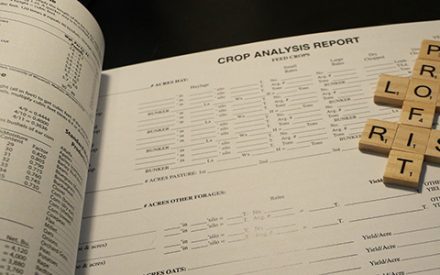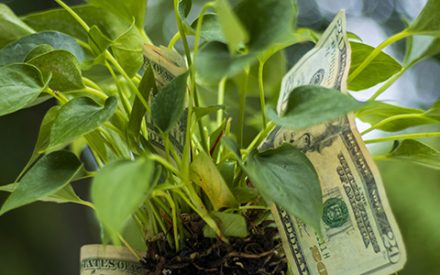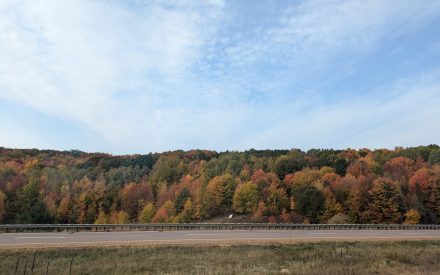Video Summary
In this video, Liz Gartman, regional crops educator with UW–Madison Extension, introduces the new Corn Silage Dry Down Monitoring Tool developed to help growers track whole plant moisture and optimize harvest timing.
This tool aggregates statewide data from dry down events, offering interactive charts and maps to support field-specific decision-making. Learn how to use the tool, contribute data, and improve silage quality through better moisture management and planning.
Resources
Transcript
0:05
Can you see my screen?
0:06
OK, Jordyn, looks perfect.
0:08
Awesome.
0:09
OK, so I’m just going to take a couple of minutes to talk about our new extension corn silage dry down monitoring tool.
0:17
And why this is important is Harkirat just spent a whole lot of time talking about ways that we can make high quality silage using short corn.
0:26
But really one of the key things that we need to be concerned about as growers is managing the whole plant moisture.
0:31
And she did a fabulous job of putting out a post on the Badger Crop Network the other day from Dent to Done.
0:40
So if you haven’t read that yet, pop over there ’cause there’s some really great reminders of what we need to be doing as we get into corn silage season.
0:48
So we’re looking to harvest that silage between 62 and 70% full plant moisture.
0:54
Of course, that’s going to depend on the different structures that we’re using for the storage of that feed.
1:00
And then as we think back to what Josh has told us about the crop progress, Most of our corn hybrids are going to need 42 to 48 days to move from that silking point to mid dent, which tells us we’re about 65 to 70% moisture.
1:16
So it is really important that we’re tracking those events as we go through the growing season and recognizing that different fields are probably at different points of that crop staging.
1:27
And it’s important that we’re paying attention to those things and and keeping track of them.
1:32
Now one of the challenges that we’ve seen over the past number of years actually is we’ve got some of these hybrids that really like to stay green.
1:42
And I’m thinking with the weather that we’ve had, we’ve had some heat and humidity, but we’ve also had quite a bit of moisture as Josh pointed out earlier.
1:50
So what’s that really going to do to our whole plant moisture as we go through the next couple of weeks and when we have that extended green that happens in that plant, our optimum whole plant moisture does not always equal that 50% kernel milk line that we’ve typically targeted when we’re looking at corn silage harvest.
2:12
So what does that mean?
2:13
It’s really, really important that we’re sampling the crop and we’re measuring that whole plant moisture on kind of a field by field basis.
2:21
So we really understand what we’re doing and in the past we’ve said, you know, dry down rates can be anywhere from 1/2 point to a point depending on a lot of different factors, but there’s a lot of inconsistency there.
2:35
And again, you know, what is the temperature and humidity that we’re looking at?
2:39
Do we have sunny versus cloudy days?
2:42
We’ve had a lot of late season, late growing season smoke and what does that do to our dry down rate?
2:49
Again, I mentioned the hybrid traits that we’re putting in the ground is that having an effect on on our ability to get that plant to dry down effectively.
2:58
And then we also have to consider those plant health and disease or insect challenges that might be existing in the field.
3:05
And that’s another situation where we really need to be monitoring those individual fields and identifying fields that might be having some challenges with plant health or insect damage or anything like that.
3:17
And it’s really key that in the next couple of weeks that we’re really starting to develop that harvest plan based on what’s going on in individual fields.
3:26
And another thing that seems kind of silly, it’s just making sure that you’re ready to go, that you’ve got your equipment ready to go, it’s tuned up, it’s greased, everything’s in working order, you’ve got spare parts, and then making sure that your bunkers, silos, bags are all all lined up and ready to go.
3:42
So last year about this time, we started having a discussion as a crops and soils team, along with some of our extension specialists, including Doctor Kaur and Doctor Ferraretto, about how we can better utilize some of this data that we’re collecting at local dry down events.
4:00
And we’ve had great opportunities as extension educators to collaborate with Agri businesses and farmers and consultants to to sponsor these dry down events across the state.
4:12
But we haven’t done a whole lot with that data that we’ve gathered.
4:15
So one of the goals that we had about a year ago is really to put together a standardized effort where we’re monitoring whole plant corn moisture and adding some other things.
4:26
Now typically we do get planting date and hybrid relative maturities, but we’ve got a host of other metrics that we’re looking at gathering when we have people out in the field.
4:37
And really we’re working to collaborate with those forage councils, crop consultants, nutritionists to get that data on a statewide basis and report it so that growers and consultants can utilize that data kind of in real time.
4:50
So our process now is to plan and staff local dry down events with consultants, Agri businesses and those forage councils.
4:57
And we’re really trying to get growers to identify a wide variety of metrics that are related to that crop in the growing season.
5:04
So we can maybe start to draw some conclusions about what’s going on as that crop is progressing.
5:10
We would also like to provide timely whole plant moisture via lab analysis cost or tester portable and IR cause clearly that’s a key piece to creating that plan.
5:19
And then report any of the data that we’ve collected locally and statewide via a visualization application and tool.
5:28
So the data that we’re looking for if, if you’re jotting things down is we’re looking for things like the grower in the county or city.
5:35
So we have a good way to track what’s going on in any given area.
5:39
We’re looking for planting date, the seed company and hybrid.
5:42
Is it BMR or not BMR?
5:44
After Harkirat’s discussion, we’re probably going to have to add is it short corn or not?to this list in the near future.
5:50
Are we using any fungicide?
5:52
Are there cover crops in the system?
5:54
What’s the relative maturity?
5:56
We’re trying to do our best to gather grain stage when things come into dry down events when we’ve got staffing to do so.
6:02
So you can make some correlations to whole plant moisture and that grain stage.
6:06
And then of course, the end number that we’re looking for is that whole plant moisture via one of those analysis metrics.
6:13
So along with our data specialist for the Crops and Soils program, Bethany Canalis and Scott Newell, our previous alfalfa outreach specialist, we put together a tool that growers can use and hopefully that’s uploaded into the chat already.
6:30
You can access it from our UW Extension Crops and Soils corn silage page.
6:35
And when you open that up, you’re going to come to a a graph like this.
6:38
And when you click on or hover over any one of these individual events, you’re going to see some of the metrics that went into that data point.
6:45
So the key ones that we have triggered here are things like sample date, plant date, maturity, moisture.
6:51
And then if you Scroll down on the page a little bit, you’re going to see the entire data set that went into that particular chart.
6:59
And really the cool thing about this is you can go into each one of these areas, whether it’s sample months, sample day, county, plant date, you can filter and choose the data that’s the most important to you and it will populate on this chart.
7:15
So if you are in Fond du Lac County and you want to just look at Fond du Lac County results from the last dry down event, you can select those metrics and that’s what’s going to pop up on that chart.
7:26
So it’s a bit more user friendly than some of the other metrics that we’ve used as extension educators have been gathering the status for years.
7:35
And then the other thing that I really like is if you hover on this map tool, this map is responsive to the last dry down event that was reported for the county.
7:47
So this is obviously reflective of the 2024 season.
7:50
Each one of these metrics would would be popping up for the last dry down event.
7:55
And as you see for most of the counties where we have data reported, we were in the right, right area for that whole plant moisture for harvest.
8:03
One other thing you’ll notice though is we are very eastern side of the state heavy and our goal is really to provide good data and good information for people across the state and that’s really where you all come in.
8:18
This is my plug that if you are already hosting dry down events, please contact your regional crops educator and see how you can get involved in getting that information and that data sent over to us.
8:30
You complete the spreadsheet, return it to us after your event, and we will load that local data into the tool.
8:36
If you’re not already hosting an event and would like to please connect with us, Really the big thing is that you need a chipper and some way to analyze the data, and we can talk you through that process as well.
8:48
So lots of opportunities to get involved and we’ll provide you with the spreadsheet of information we’re looking for.
8:55
You can find your regional crops educator by taking a look at this map.
8:59
Otherwise, there should be a link in the chat as well where you can go and click on our people page to find out where we’re all at.
9:08
Alternatively, you can always reach out to me or Melissa Ohlrich is up in Clark and Marathon County.
9:14
She and I are partnering on this tool to help with the administration.
9:17
So we are happy to get you involved and find ways to to get more data into this tool.
9:26
So I think I have used up all of my time and I need to leave some for Luiz.
9:31
So please absolutely reach out if you’re interested, put any information or any questions into the chat and I will be here through the end of the webinar.
9:40
So thank you.
9:43
Thanks, Liz.
Badger Crop Connect
Timely Crop Updates for Wisconsin
Second and fourth Thursdays 12:30 – 1:30 p.m.
Live via Zoom

 ▶ Fall 2025 Financial Assistance for Producers
▶ Fall 2025 Financial Assistance for Producers ▶ Fall 2025 Ag Policy Update
▶ Fall 2025 Ag Policy Update ▶ Fall 2025 Corn and Soybean Market Outlook
▶ Fall 2025 Corn and Soybean Market Outlook ▶ November 6 Ag Weather Outlook for Wisconsin
▶ November 6 Ag Weather Outlook for Wisconsin


